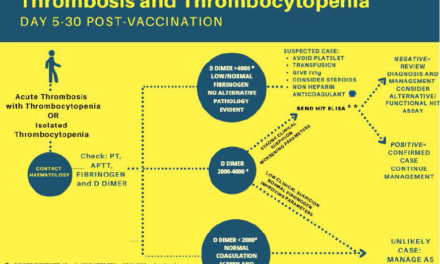Disruptive Innovation in Emergency Medicine
Every year at ACEP, the exhibit hall features innovatED: an interactive, educational space that provides a sneak-peek of new innovations in emergency medicine. This year, four start-up companies participated in a “Shark Tank” style pitch competition at the exhibit. This article highlights their disruptive technologies.
The author is not affiliated with any vendors in this article and has no conflicts of interest to report.

Novuson: Soundly Simplifying Surgery
Current hemostatic and vessel ligation devices utilize either mechanical ligation, high frequency electrical currents, or “harmonic” ligation that relies on friction heat by means of mechanically vibrating cutting bars. These solutions are functional, but can result in surrounding tissue damage. In addition, they are limited in speed, precision and range of application.
Novuson’s technology is the first vessel ligation device capable of rapid, precise ablation using ultrasound waves for coagulation and hemostatic control. It may be the first substantive innovation in over 20 years for targeted vessel sealing, dividing and hemostasis. Transducers embedded into UltraStat device transmit direct therapeutic ultrasound, focusing the waves between the opposing jaws. This results in the controlled application of energy without passing electrical current through the patient. The unique therapeutic delivery method reduces surrounding tissue damage, eliminates tissue adhesion and does not create smoke. Novuson’s technology may enable clinicians to more rapidly and safely control bleeding.
For more information, visit: novuson.com

Fesarius Therapeutics: Engineered Skin Replacement
Every year, thousands of patients suffer from poor wound healing after tissue loss from trauma, burns or infection. Current grafts use a scaffold that healthy skin cells invade, allowing the process of skin barrier recreation to start. However, these products typically experience an unacceptably high rate of complication and failure.
Fesarius Therapeutics is developing an engineered skin replacement product that uses patented microsphere hydrogel technology. The gel scaffold uses microspheres embedded in a collagen hydrogel to maximize the number of differential density interfaces. These differential densities uniquely drive cell invasion, proliferation and eventual healing. These innovations have potential to benefit patients with wounds that typically fail grafting.
For more information, visit: fesariustherapeutics.com

Brava Diagnostics: Point-of-care Troponin Assay
Chest pain is a very common chief complaint of patients in the ED. In 2016, there were approximately 8 million visits to emergency departments for chest pain in the U.S. In addition, 18.2 million Americans had coronary artery disease (CHD) in 2016, according to the 2019 American Heart Association Statistical Update for Heart Disease and Stroke. The diagnostic workup for chest pain is often complicated by lengthy lab turn-around times, especially in facilities without 24-hour on-site labs.
Brava Diagnostics is developing a highly sensitive troponin point-of-care test for diagnosis of heart attack. The proprietary evanescent planar waveguide platform delivers a lab-quality troponin test in a point-of-care ED setting. The test is run on a whole blood sample with results in less than 15 minutes. In contrast with other point-of-care troponin tests, this meets the American College of Cardiology and European Society of Cardiology guidelines for sensitivity and precision. Rapid diagnosis will allow for faster cardiac ischemia rule-out for patients presenting with chest pain. Decreasing workup times can reduce excess admissions, reduce costs and improve patient satisfaction.
For more information, visit: bravadx.com

Elsius Biomedical: Advance Extracorporeal Membrane Oxygenation
Extracorporeal membrane oxygenation (ECMO) was initially developed in the 1970’s to treat premature infants with poor lung development. Since then, its use has expanded to include children and adults as a last resort oxygenation therapy. However, ECMO is complicated by its physical size, blood clotting, necessity for systemic anticoagulation and the systemic inflammatory response.
Elsius Biomedical is developing a compact, integrated ECMO device that leverages a proprietary biocompatible coating specifically developed for extra corporeal life support applications. The coating, which has been developed in conjunction with Ension Inc, utilizes a glycocalyx to mimic the way blood interacts with blood vessel walls. This reduces the inflammatory response and need for anticoagulation associated with the procedure. In addition, the oxygenator and blood pump are a combined, portable, compact unit. By reducing both complications and increasing portability, it is possible that Elsius’ ECMO machine could expand ECMO initiation to the ED.
For more information, visit: www.elsius.com ■
This article is part of the following sections:
Samantha manages fcep.org and publishes all content. Some articles may not be written by her. If you have questions about authorship or find an error, please email her directly.








